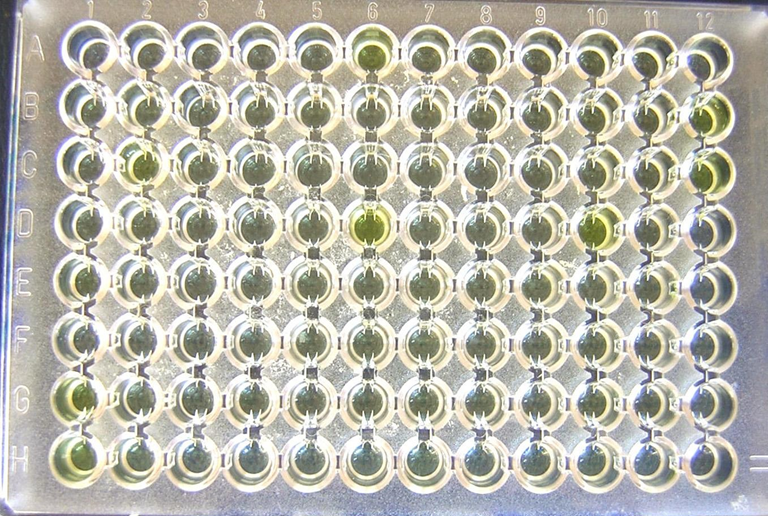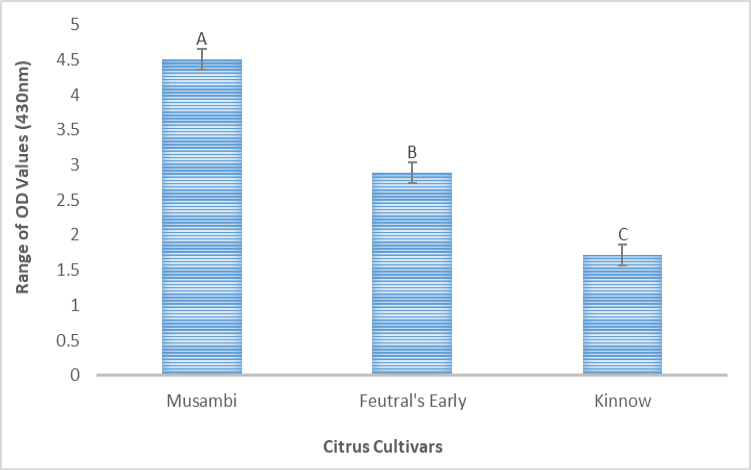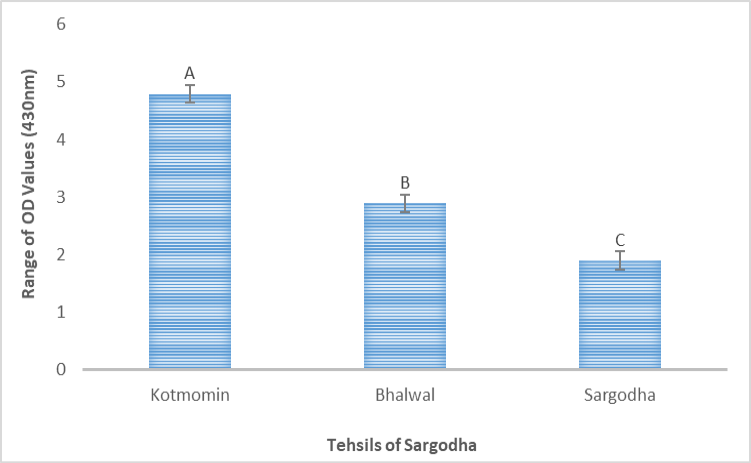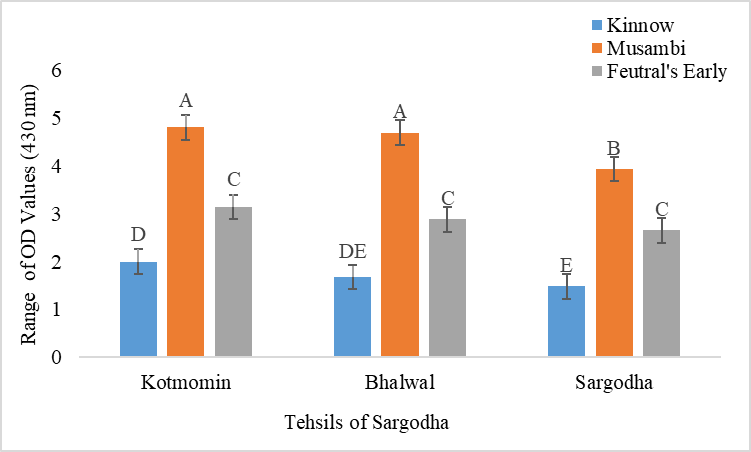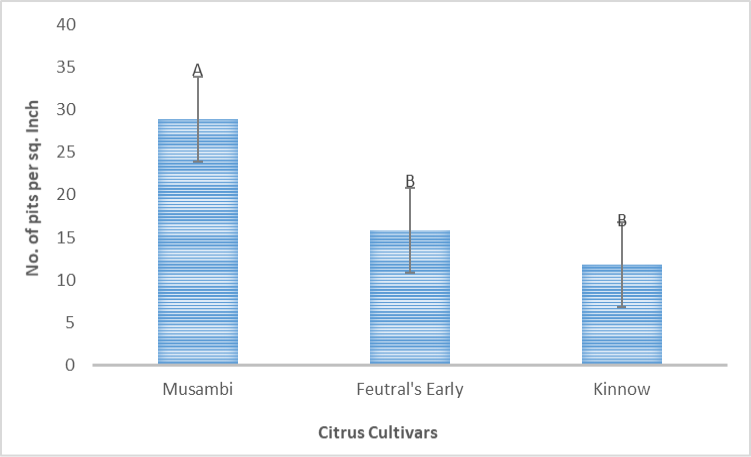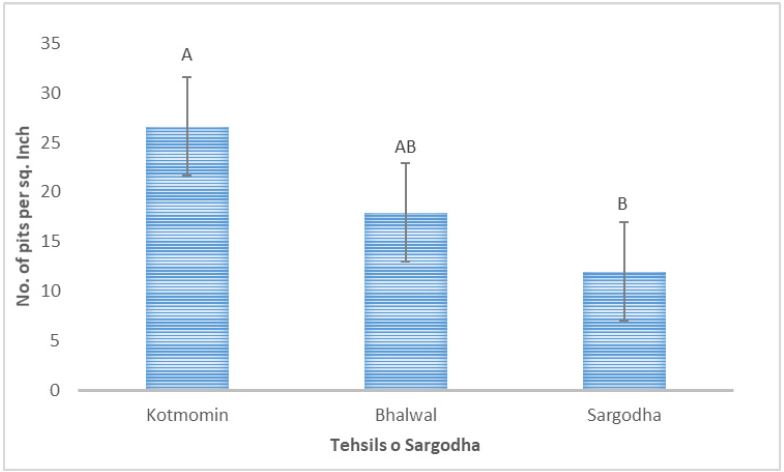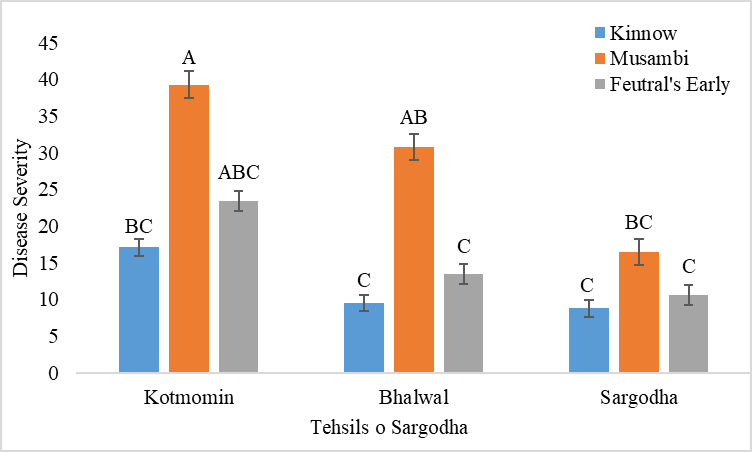ELISA Based Monitoring of Citrus Tristeza Virus in Declining Orchards of Sargodha, Pakistan
Talha Shafique1, Mustansar Mubeen2, Yasir Iftikhar2, Qaiser Shakeel3*, Muhammad Ahmad Zeshan2, Haseeb Ahmed Lalika4, Malik Abd-ur-Rehman5, Atta ur Rehman2, Muhammad Irfan Zafar6 and Farwa Seemab2
1Department of Knowledge Research Support Service, University of Management and Technology Lahore-54782, Pakistan; 2Department of Plant Pathology, College of Agriculture, University of Sargodha, Sargodha-40100, Pakistan; 3Cholistan Institute of Desert Studies, The Islamia University of Bahawalpur, Bahawalpur-63100, Pakistan; 4Department of Entomology, Faculty of Agriculture and Environment, The Islamia University of Bahawalpur, Bahawalpur-63100, Pakistan; 5Citrus Research Institute, Sargodha-40100, Pakistan; 6Key Laboratory of Oasis Agricultural Pest Management and Plant Protection Resources Utilization, Xinjiang Uygur Autonomous Region/College of Agriculture, Shihezi University, Shihezi-832003, P.R. China.
*Correspondence | Qaiser Shakeel, Cholistan Institute of Desert Studies, The Islamia University of Bahawalpur, Bahawalpur-63100, Pakistan; Email: qaiser.shakeel@iub.edu.pk
Figure 1:
Spatial distribution of CTV in citrus orchards of Sargodha.
Figure 2:
The intensity of the yellow hue indicated a higher concentration of the virus in the wells.
Figure 3:
Different disease incidence for varieties.
Figure 4:
Different disease incidence for Sargodha district.
Figure 5:
Disease incidence of CTV in three tehsils on 3 citrus cultivars.
Figure 6:
Different disease severity for varieties.
Figure 7:
Different disease severity of Sargodha district.
Figure 8:
Disease severity of CTV in three tehsils on three citrus cultivars.






